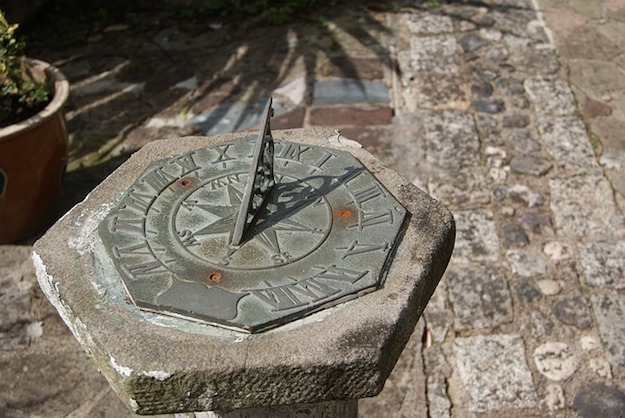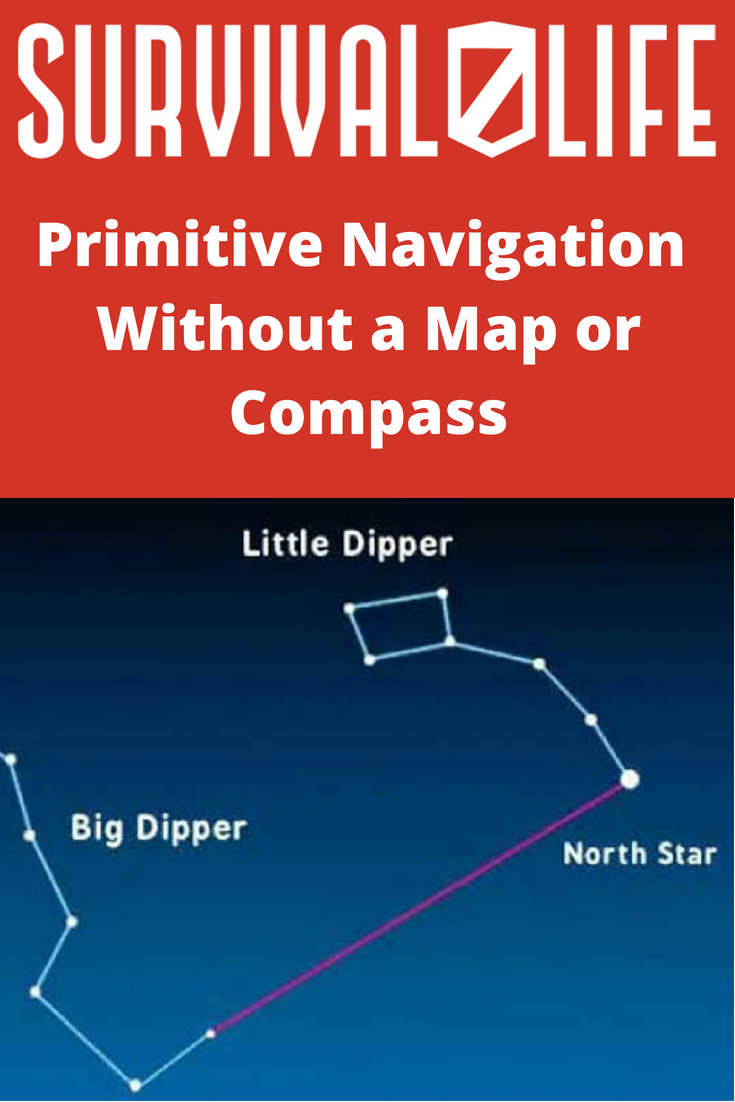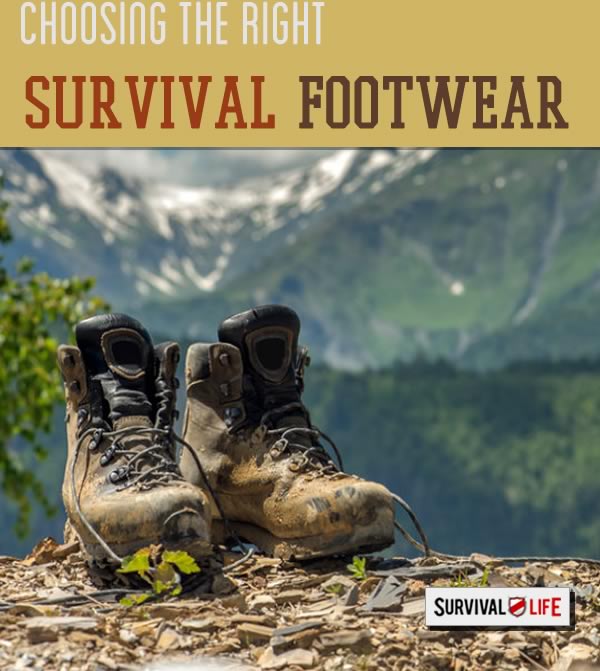Archives
Primitive Navigation Without a Map or Compass

What is primitive navigation?
Primitive navigation techniques can help you find your way in the wilderness without the help of a map or compass.
These are essential skills for any outdoorsman or survivalist to learn. Today, Gaye Levy of Backdoor Survival — with the help of contributor Jim Cobb — teaches you everything you need to know about primitive navigation. Check out their tips below, and be sure to visit Backdoor Survival for more outdoor survival tips.
Primitive Survival Without a Map or Compass
When it comes to getting out of dodge, my hope is that I will never have to bug out. Ever. On the flip side of things, I also hope that I will never have to find my way back home following a major disruptive event. Realistically, however, turning a blind eye to the realities of a disaster requiring a trek on foot to or from my home would be foolhardy.
The logical thing, of course, would be to have maps and a compass on board at all times. The first reality is that a disaster, whether wrought by Mother Nature or man, can happen when we least suspect it. The second reality is that unless you are the exception to the rule, you probably do not have a compass and map with you at all times.
That begs the question: how do you go about finding your way back home without a map and compass?
Primitive navigation is not my thing. I can find my way home with a chart and a compass rose, or an old Loran C (does anyone else remember those?) no problem. And of course, a GPS is a cinch. But I need to do better.
For this article, I called upon my friend and fellow blogger, Jim Cobb, to answer the question of finding our way back home when all we have with us is are wits and will to get there.
by Jim Cobb
We’ve all been there at least once or twice. Traveling through an unfamiliar area and realizing you have absolutely no idea where you are or how to get back on track. It can be rather frightening, especially if you’re in a questionable urban area or perhaps out in the bush and the sun is setting.
Fortunately, over the past centuries mankind has learned a thing or two about determining direction using indicators found in nature. We can use these naturally occurring clues to help us find our way. We all know, or should know by now, that the sun rises in the east and sets in the west. So, if it is early morning or late afternoon, you should be able to orient yourself that way, if nothing else.
Many of us were taught this when we were kids but perhaps have forgotten it over the years. Find the Big Dipper, which is usually pretty easy. Look at the two stars that make up the outer edge of the “cup” on the Big Dipper. Draw an imaginary line connecting those two stars and extending out beyond the “open” end of the cup. That line will lead you to the North Star, which is also the last star in the “handle” of the Little Dipper.
Knowing where the North Star rests in the sky will help you find all four compass directions. But, that only works at night, what about during the day?
Find a reasonably straight stick and jam it into the ground. If you’re in the northern hemisphere, the shadow created by the stick will point in a northern direction. Not precisely north, of course, but with a little time, we can improve on this primitive compass a bit. Place a golf ball size rock at the top of the stick’s shadow. Come back in 15-20 minutes and you’ll see the shadow has moved a bit. Place another rock at the new location. Do the same thing 2-3 more times and you’ll have a line of rocks that follows a generally east-west direction. The shadow still points north so the rock line to the left points west and the line to the right points east.

If you’re lost in an urban area, you might not want to take the time to find a good spot to jam sticks into the ground and wait an hour to figure out compass direction. There are, however, a few tips and tricks you can utilize to at least get yourself to a better location.
For starters, and this is sort of a “duh” type of tip but bear with me, building numbers increase as you travel away from the city center. Now, the “city center” might not be the exact middle as seen on a map, it depends on where they started their numbering system. But, in general, the numbers go up as you travel toward the outside border of the city. In many areas, though this isn’t any sort of rule that applies everywhere, three digit numbers indicate you’re within city limits, four digit numbers mean you’re in the city suburbs, and five digits mean you’re out in the sticks. Again, there are a ton of exceptions to that but it follows true more often than not.
If you pass a cemetery, it might be useful to know that gravestones generally face east. The reason for this is that in Christian doctrine, when Jesus returns He will do so in the east so those who are buried and will rise again will do so already facing in His direction.

Along those same lines, most Christian churches, especially the older ones, were built along a west to east line. As one sits in the church and faces the altar, one is facing east. Given that many churches are built such that it is a straight line from the front door to the altar, you can surmise that facing the front door means you’re facing east.
Most satellite TV systems utilize satellites that sit in geosynchronous orbit above the Earth’s equator. Therefore, most satellite dishes in the United States will face in a southerly direction. Might be southeast, might be directly south, might be southwest, but knowing that much might be just enough to get you moving in the right general direction.
 Now, all of that is quite fun and interesting but is meaningless unless you know the compass direction in which you should be heading.
Now, all of that is quite fun and interesting but is meaningless unless you know the compass direction in which you should be heading.
Therefore, it is important to have at least a general sense of where you are and where you’re going.
For most of us, this isn’t too big of an issue in the grand scheme of things. In our regular daily lives, while we might be in a hurry to reach our destination, it is rarely ever a true life-or-death situation.
Lost in the woods, though? That can go from worrisome to downright scary pretty quick. Evacuating an urban area ahead of a coming danger and getting lost along the way could also be problematic.
Knowing how to find basic compass direction in either of those situations could be quite crucial.
A Compass is a Better Option
Having a compass and knowing how to use is always a preferable option. I keep a mini-compass on my survival key ring, which, now that I think about it, I have not shared with you.

I also have a prismatic sighting compass in my Bug Out Bag but shame on me for not putting it to practical use.
The Final Word
I live on a island offshore the mainland US. If a disruptive event happened here, I would be able get home without too much difficultly by following the shoreline. Hopefully there will be roads. But off-island? That would not be as easy. Setting aside getting a boat ride home when the ferries are not running, finding my way along an unfamiliar route would be difficult at best and impossible at worst.

Finding my way from the mainland back home without a compass and a map will not be easy.
And now you know where I live!
This summer, while hiking about, I plan to practice my primitive navigation skills plus bone up on the use a compass. Most assuredly, I do want to find my way home, no matter what.

Want to know more? Check out these related articles:
How to Signal for Help in the Wilderness
How to Use a Compass and a Map
Enjoy your next adventure through common sense and thoughtful preparation!
Gaye
-

 Do It Yourself7 months ago
Do It Yourself7 months agoParacord Projects | 36 Cool Paracord Ideas For Your Paracord Survival Projects
-

 Do It Yourself9 months ago
Do It Yourself9 months agoHow To Make Paracord Survival Bracelets | DIY Survival Prepping
-

 Do It Yourself9 months ago
Do It Yourself9 months ago21 Home Remedies For Toothache Pain Relief
-

 Do It Yourself10 months ago
Do It Yourself10 months agoSurvival DIY: How To Melt Aluminum Cans For Casting
-

 Exports8 months ago
Exports8 months agoAre Switchblades Legal? Knife Laws By State





![Feature | Men's wearing black drinking water in the mountain | How To Stay Hydrated While Hiking [ Video]](https://survivallife.com/wp-content/uploads/2016/05/Mens-wearing-black-drinking-water-in-the-mountain-Stay-Hydrated-us-Feature-.jpg)


Pingback: 19 "Old World" Primitive Survival Skills You'll WISH You Knew Before TSHTF
Pingback: Improvised Weapons: So Easy A Caveman Can Do It | Survival Life
Pingback: Six Basic Wilderness Survival Skills | Survival Life Preparedness
Pingback: Personal Survival Skills For The Everyday Joe And Jane
Pingback: Ground Navigation | Finding Your Path To Survival | Survival Life
Pingback: Ways To Find True North Without A Compass | Survival Life
Pingback: 19 “Old World” Primitive Survival Skills You’ll WISH You Knew Before SHTF - Survive!
Pingback: 19 “Old World” Primitive Survival Skills You’ll WISH You Knew Before SHTF
Pingback: Tips for Using a Compass | Survival Life
Pingback: 7 Ways To Find True North Without A Compass | Primitive technology
Pingback: 7 Ways To Find True North Without A Compass - Survive!
Pingback: 7 Ways To Find True North Without A Compass
Pingback: 7 Ways To Find True North Without A Compass | Life Off The Grid
Pingback: 19 “Old World” Primitive Survival Skills You’ll WISH You Knew Before SHTF – Ultimate Survival Alerts
Pingback: 19 “Old World” Primitive Survival Skills You’ll WISH You Knew Before SHTF - Marine Survival Kits
Pingback: 7 Ways To Find True North Without A Compass - The Self Reliant Princess News